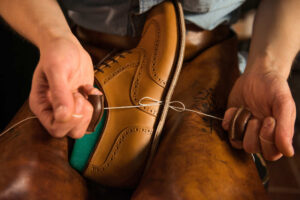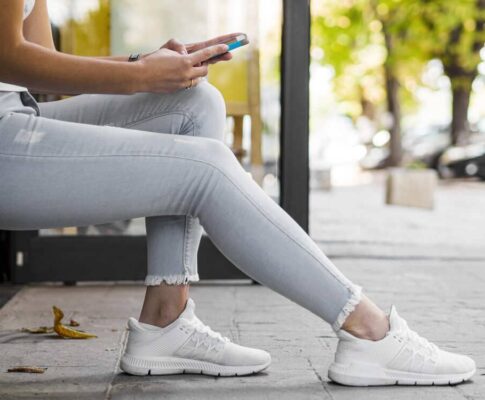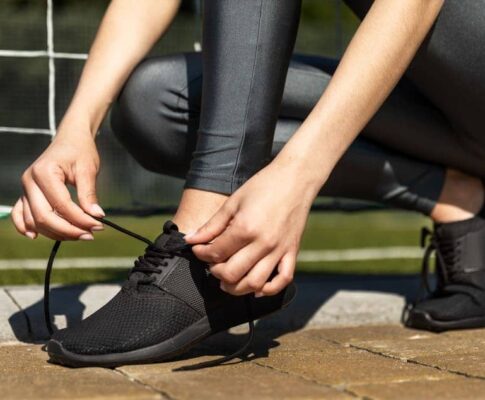
A timeless wardrobe essential, leather shoes are prized for their timeless style, toughness, and adaptability. Even the best leather, though, is susceptible to unsightly scuffs and scratches over time. Don’t worry if your favorite leather shoes are starting to show signs of wear and tear. With the correct methods and a little perseverance, most scuffs can be easily repaired at home.
We’ll show you exactly how to repair scuffed leather shoes, bring back their luster, and maintain their good appearance for many years to come in this extensive guide.
What Causes Scuffs on Leather Shoes?
It’s useful to know why leather shoes get scuffed in the first place before beginning the repair procedure. Natural leather shoes are pliable and porous, which allows it to withstand pressure and shock. Surface-level abrasions can be caused by normal wear and tear, such as walking on uneven surfaces, bumping into stair edges, or rubbing up against curbs. Although minor scuffs are unavoidable, regular care can prolong the life of your shoes and lessen their appearance.
Different Leather Scuff Types
Scuffs are not all the same. Knowing the kind of scuff will assist you in selecting the best repair technique:
- Surface Scuffs: Minor blemishes that solely impact the shoe’s polish or finish.
- Deep scratches or scuffs are marks that pierce the surface of the leather, occasionally revealing the lighter-colored leather shoes beneath.
- Cracks: More serious harm where the leather has split and dried.
Things You’ll Need
The following materials are needed to repair scuffed leather shoes:
- Towels made of microfiber or soft, lint-free fabrics
- Saddle soap or mild leather cleaner
- Conditioner for leather
- Leather polish or repair cream (in a complementary color)
- Shoe polish (either cream or wax, depending on the color of your shoes)
- An old toothbrush or a soft-bristle brush
- Swabs of cotton
Step-by-Step Guide: How to Fix Scuffed Leather Shoes
Step 1: Wash your shoes
Because of the accumulation of dust and dirt, scuffs frequently appear worse. Begin by thoroughly cleaning your shoes.
- To get to every area of the shoe, untie the laces.
- To get rid of surface dirt, use a dry cloth to clean the shoes.
- Wet a cloth with water and a tiny bit of saddle soap or mild leather cleaner.
- Work up a light lather by gently rubbing the scuffed area in small circles.
- Use a fresh, moist cloth to remove any soap residue, then allow the shoes to air dry naturally. Avoid heat or direct sunlight, as these can cause the leather to become dry.
Step 2: Take Care of Surface Rubbing
Scuffs on the surface are frequently easily buffable.
- Rub with a moist cloth: Using a soft, moist cloth, gently rub the scuffed area in a circular motion. This can occasionally mix the scuff and redistribute the natural oils in the shoe.
- Use shoe polish that matches: Dab on a tiny bit of cream or wax polish that matches the color of your shoes. Small, circular strokes of polish should be used to buff the leather with a soft cloth.
- Buff to shine: Use a fresh cloth to buff the repaired area and blend it in with the rest of the shoe after allowing the polish to dry for a few minutes.
Step 3: Repair More Severe Scratches and Scuffs
For more tenacious scuffs that have partially obscured the color or finish of the leather:
- Apply leather repair cream: Lightly dab leather repair cream, sometimes known as leather balm or filler, onto the scuffed area with a cotton swab or your finger. Select a hue that closely resembles the color of your shoes.
- Blend and smooth: Work the cream into the leather as gently as possible, feathering the edges to make it blend in with the surrounding area.
- Let it dry: As directed by the product, give the repair cream 10 to 30 minutes to dry completely.
- Polish and buff: After drying, use a complementary shoe polish and buff as before.
Step 4: Make the Leather Better
It’s crucial to give the leather back its suppleness and moisture after cleaning and repairing scuffs:
- Put leather conditioner on: Using a fresh cloth, evenly distribute a tiny bit of leather conditioner over the shoe, paying special attention to the recently repaired areas.
- Give it time to absorb: Give the conditioner ten to fifteen minutes at least to soak in.
- Gently buff: To bring back the shoe’s original shine, use a dry cloth to wipe away any residue.
Particular Advice for Various Types of Leather
- Patent Leather: Apply a tiny bit of mineral oil or petroleum jelly to a slightly moist cloth to repair scuffed patent leather shoes. Steer clear of abrasive products because patent leather is coated.
- Suede or Nubuck: Special suede brushes and erasers are needed for suede shoes. Standard creams and polishes can destroy the texture, so never use them. Instead, use a suede brush or eraser to rub the scuff in a single direction gently.
- Colored Leather: To ensure that the color matches and doesn’t darken the leather, always test repair creams or polishes on a discrete section first.
When to Get Expert Assistance
A professional shoe cobbler can do wonders for your shoes if they have deep cracks, severe scuffs, or structural damage. They can make even severely damaged shoes look almost brand new thanks to their access to specialty dyes, fillers, and finishing tools. Professional restoration is frequently worth the investment for pricey or sentimental pairs.
Conclusion
Repairing scuffed leather shoes at home is an easy and rewarding way to give your shoes a new lease on life. Your leather shoes will continue to look sleek and fashionable for many years if you give them regular cleaning, conditioning, and attention to scuffs. Your favorite pair will reward you with comfort, self-assurance, and timeless style if you put in a little maintenance.




